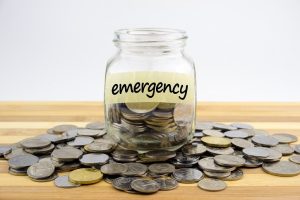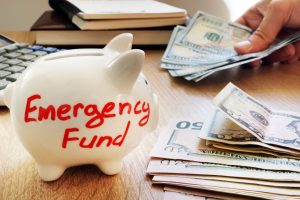Life has a way of throwing curveballs when you least expect them. Your car breaks down on the way to an important meeting. A medical emergency lands you in the hospital. Your company announces unexpected layoffs. These scenarios aren’t just hypothetical—they’re realities that millions of people face every year.
An emergency fund serves as your financial safety net, providing peace of mind and protecting you from falling into debt when unexpected expenses arise. Yet despite its importance, nearly 40% of Americans can’t cover a $400 emergency expense without borrowing money or selling something.
The good news? Building an emergency fund doesn’t require a six-figure salary or extreme lifestyle changes. With the right strategies and consistent effort, anyone can create a robust financial cushion. This guide will walk you through everything you need to know about emergency savings, from calculating how much you need to implementing automated systems that make saving effortless.
Whether you’re starting from zero or looking to strengthen an existing emergency fund, you’ll discover practical steps to secure your financial future and sleep better at night knowing you’re prepared for whatever comes your way.
Chapter 1: Calculating Your Emergency Fund Needs
The first step in building your emergency fund is determining exactly how much money you need to set aside. While financial experts often recommend three to six months of expenses, your ideal emergency fund size depends on several personal factors.
Understanding the Standard Guidelines
Most financial advisors suggest saving three to six months’ worth of living expenses. This range provides a buffer for common emergencies like job loss, medical bills, or major home repairs. However, this guideline serves as a starting point rather than a one-size-fits-all solution.
Your monthly expenses should include all necessary costs: housing, utilities, groceries, transportation, insurance premiums, minimum debt payments, and other essential spending. Don’t include discretionary expenses like dining out, entertainment, or shopping—during a true emergency, you can temporarily cut these costs.
Factors That Influence Your Target Amount
Several personal circumstances should influence your emergency fund size:
Job stability and income variability play crucial roles in determining your needs. If you work in a volatile industry or have irregular income as a freelancer, aim for six to twelve months of expenses. Stable employment with steady paychecks might allow for a smaller fund of three to four months.
Family size and dependents increase your financial responsibilities and potential emergency expenses. Single individuals might manage with smaller funds, while families with children need larger cushions to handle multiple people’s needs.
Health considerations can significantly impact your emergency fund requirements. Chronic health conditions, expensive medications, or inadequate insurance coverage warrant larger emergency funds to handle unexpected medical costs.
Home ownership versus renting affects your emergency fund needs. Homeowners face additional risks like roof repairs, HVAC failures, or appliance replacements that renters typically don’t encounter.
Creating Your Personal Emergency Fund Goal
Start by calculating your monthly essential expenses over the past three months to get an accurate average. Multiply this figure by your chosen number of months based on your personal risk factors.
For example, if your monthly essentials total $3,500 and you decide on a five-month emergency fund, your target would be $17,500. This might seem daunting, but remember that building an emergency fund is a gradual process that doesn’t happen overnight.
Consider setting milestone goals to make the process more manageable. Your first milestone might be $1,000, then one month of expenses, then two months, and so on. Celebrating these smaller victories keeps you motivated throughout the journey.
Chapter 2: Effective Budgeting and Saving Strategies
Building an emergency fund requires intentional budgeting and smart saving strategies. The key is finding money in your current budget and developing sustainable habits that support consistent saving.
Finding Money in Your Current Budget
Before assuming you need to earn more money to build your emergency fund, examine your current spending patterns. Most people can find savings opportunities by conducting a thorough budget review.
Track your spending for at least one month to identify where your money actually goes. Many people are surprised to discover how much they spend on small, frequent purchases that add up significantly over time. That daily coffee shop visit, multiple streaming subscriptions, or frequent takeout orders might be costing you hundreds of dollars monthly.
Look for categories where you can temporarily reduce spending while building your emergency fund. This might mean cooking at home more often, finding free entertainment options, or negotiating better rates on services like car insurance or phone plans.
The 50/30/20 Rule and Emergency Savings
The 50/30/20 budgeting rule provides a simple framework for allocating your income: 50% for needs, 30% for wants, and 20% for savings and debt repayment. Within that 20% savings portion, prioritize emergency fund contributions before other savings goals.
If your budget is tight and 20% feels impossible, start smaller. Even saving 5% or 10% of your income makes progress toward your emergency fund goal. The important thing is establishing the habit of regular saving, which you can increase over time as your financial situation improves.
Creative Ways to Boost Your Emergency Fund
Beyond cutting expenses, consider strategies to generate additional money specifically for your emergency fund:
Sell items you no longer need. Go through your home and identify electronics, clothing, furniture, or other items you can sell online or at consignment shops. Use these proceeds exclusively for your emergency fund.
Take on temporary side work. Freelance projects, gig economy work, or part-time jobs can provide extra income. Treat this additional money as emergency fund contributions rather than lifestyle upgrades.
Use windfalls strategically. Tax refunds, work bonuses, gifts, or other unexpected money should go directly into your emergency fund until you reach your target amount.
Implement savings challenges. Try the 52-week savings challenge, where you save $1 the first week, $2 the second week, and so on. By year-end, you’ll have saved $1,378.
Making Saving Automatic and Painless
The most successful savers make the process automatic. Set up recurring transfers from your checking account to your emergency fund savings account immediately after each paycheck. This “pay yourself first” approach ensures you save before spending on other things.
Start with an amount that feels comfortable, even if it’s just $25 per paycheck. You can gradually increase this amount as you adjust to living on slightly less money. The goal is building a sustainable habit that continues over time.
Chapter 3: High-Yield Savings Options
Where you keep your emergency fund matters almost as much as how much you save. Your emergency fund needs to balance accessibility, safety, and growth potential to serve its purpose effectively.
Traditional Savings Accounts vs. High-Yield Options
Traditional savings accounts at big banks often offer interest rates below 0.5%, meaning your money barely grows over time. While these accounts provide easy access and FDIC protection, they’re not the best option for maximizing your emergency fund’s potential.
High-yield savings accounts, typically offered by online banks and credit unions, can provide interest rates 10 to 20 times higher than traditional accounts. These accounts still offer the same FDIC protection while helping your emergency fund grow more effectively.
Online Banks and Credit Unions
Online banks can offer higher interest rates because they have lower overhead costs than traditional brick-and-mortar banks. They pass these savings on to customers through better rates and fewer fees.
Popular online banks for emergency funds include Ally Bank, Marcus by Goldman Sachs, and Capital One 360. These institutions offer competitive rates, no minimum balance requirements, and easy online account management.
Credit unions also provide excellent high-yield savings options, often with competitive rates and personalized customer service. Many credit unions offer special savings programs designed specifically for emergency funds.
Money Market Accounts and CDs
Money market accounts combine features of checking and savings accounts, often offering higher interest rates than traditional savings while providing limited check-writing privileges. These can work well for emergency funds if you don’t mind potential transaction limits.
Certificates of deposit (CDs) offer higher interest rates in exchange for locking up your money for specific time periods. While CDs aren’t ideal for full emergency funds due to early withdrawal penalties, you might consider keeping a portion of your emergency fund in short-term CDs once you’ve built a substantial cash cushion.
Key Features to Look For
When choosing where to keep your emergency fund, prioritize these features:
FDIC or NCUA insurance protects your deposits up to $250,000, ensuring your money is safe even if the institution fails.
No monthly fees help maximize your savings by avoiding charges that eat into your balance.
Easy access through online banking, mobile apps, and ATM networks ensures you can reach your money quickly during emergencies.
Competitive interest rates help your emergency fund grow over time, though this shouldn’t come at the expense of accessibility or safety.
No minimum balance requirements allow you to start building your fund regardless of your initial deposit amount.
Chapter 4: Automating Your Savings
Automation removes the decision-making and willpower required for consistent saving. By setting up automatic systems, you ensure steady progress toward your emergency fund goal without constantly thinking about it.
Setting Up Automatic Transfers
The most effective automation strategy involves scheduling automatic transfers from your checking account to your emergency fund savings account. Time these transfers to occur shortly after your paychecks are deposited, treating your emergency fund contribution as a non-negotiable expense.
Many banks allow you to set up recurring transfers through their online banking platforms or mobile apps. You can typically choose the frequency (weekly, bi-weekly, or monthly) and adjust the amount as needed.
Consider setting up multiple small transfers rather than one large monthly transfer. This approach spreads the impact across your entire month and reduces the likelihood of overdrafts or cash flow problems.
Direct Deposit Splitting
If your employer offers direct deposit, you might be able to split your paycheck between multiple accounts automatically. This means a predetermined amount goes directly to your emergency fund before you ever see it in your checking account.
Contact your human resources department to learn about direct deposit options. Many payroll systems allow you to specify dollar amounts or percentages for different accounts, making it easy to automate your emergency fund contributions.
Using Apps and Technology
Several apps and services can help automate and optimize your emergency fund savings:
Digit analyzes your spending patterns and automatically saves small amounts when your account balance allows. The app uses algorithms to determine safe amounts to save without affecting your cash flow.
Qapital rounds up your purchases to the nearest dollar and saves the difference. While the amounts are small, they add up over time and don’t require significant budget adjustments.
YNAB (You Need A Budget) helps you allocate money for specific purposes, including emergency funds, and tracks your progress toward goals.
Overcoming Automation Challenges
Some people worry that automation will cause overdrafts or cash flow problems. Start with very small amounts—even $10 per week—and gradually increase as you become comfortable with the process.
Monitor your accounts regularly, especially when first implementing automation. Most banks send alerts when balances drop below certain thresholds, helping you avoid overdraft fees.
If irregular income makes automation challenging, consider setting up manual transfers on a schedule. Mark specific dates on your calendar to review your finances and transfer appropriate amounts to your emergency fund.
Chapter 5: Overcoming Savings Challenges
Building an emergency fund isn’t always straightforward. Most people encounter obstacles that test their commitment to saving. Understanding common challenges and having strategies to overcome them increases your chances of success.
Dealing with Low Income
Limited income makes saving feel impossible, but even small amounts add up over time. Focus on finding tiny amounts to save rather than feeling discouraged by large emergency fund targets.
Start by saving loose change in a jar, or set aside $1 per day. These amounts might seem insignificant, but they build the saving habit and provide a foundation for larger contributions later.
Look for ways to increase income through skills development, asking for raises, or finding better-paying jobs. While building these longer-term income improvements, continue saving whatever amount possible to maintain momentum.
Managing Competing Financial Priorities
Many people struggle to balance emergency fund contributions with other financial goals like debt repayment, retirement savings, or major purchases. While personal finance experts debate the optimal order, most agree that having some emergency savings takes priority over non-essential goals.
If you have high-interest debt, consider building a smaller emergency fund ($1,000 to $2,000) before focusing heavily on debt repayment. This prevents you from going further into debt when small emergencies arise during your debt payoff journey.
Once you’ve eliminated high-interest debt, return to building your full emergency fund before pursuing other savings goals. This foundation protects all your other financial progress.
Avoiding the Temptation to Spend
Emergency funds can feel like easy access to money for non-emergencies. Combat this temptation by keeping your emergency fund in a separate bank from your everyday accounts, making access slightly less convenient.
Clearly define what constitutes an emergency before you need the money. True emergencies are unexpected, necessary, and urgent expenses that you cannot delay or avoid.
Create a “cooling off” period before accessing emergency funds. Wait 24 to 48 hours after identifying a potential emergency to ensure it truly qualifies and explore alternative solutions.
Rebuilding After Using Emergency Funds
When you do need to use your emergency fund, prioritize rebuilding it as quickly as possible. Return to your automatic savings plan and consider temporarily increasing contributions to restore your safety net faster.
Don’t feel guilty about using your emergency fund for true emergencies—that’s exactly what it’s for. The key is distinguishing between genuine emergencies and situations you can handle through budgeting adjustments or delayed purchases.
Staying motivated During the Building Process
Building an emergency fund takes time, and the process can feel slow and unrewarding. Set smaller milestone goals and celebrate when you reach them. Visual tracking methods, like coloring in a thermometer-style chart, can help maintain motivation.
Remember that your emergency fund provides peace of mind and financial security that’s worth far more than the money itself. Focus on the security and options it provides rather than just the dollar amount.
Consider the costs of NOT having an emergency fund: credit card debt, borrowing from retirement accounts, or financial stress during difficult times. These consequences make the effort of building an emergency fund worthwhile.
Secure Your Financial Future Starting Today
Building an emergency fund represents one of the most important steps you can take toward financial security and peace of mind. While the process requires patience and discipline, the protection it provides makes every dollar saved worthwhile.
Your emergency fund serves as more than just money in an account—it’s freedom from financial anxiety, protection against debt accumulation, and the foundation for all your other financial goals. With this safety net in place, you can pursue opportunities, take calculated risks, and weather unexpected storms without derailing your long-term financial plans.
The strategies outlined in this guide provide a roadmap, but your journey will be unique to your circumstances. Start where you are, use what you have, and do what you can. Whether you begin with $10 per week or $100 per month, the important thing is taking that first step.
Choose one action from this guide to implement this week. Set up an automatic transfer, open a high-yield savings account, or calculate your emergency fund target. Small actions compound over time into significant financial security.
Your future self will thank you for the financial foundation you’re building today. Every dollar you save brings you closer to true financial independence and the confidence that comes from knowing you’re prepared for whatever life throws your way.



